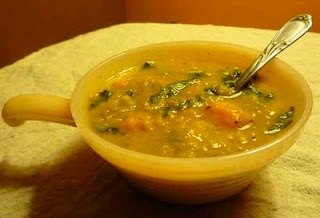Written by the fabulous Leigh, Veggie Might is a weekly Thursday column about all things Vegetarian.
Almonds are my go-to healthy, everyday snack that picks me up when I’m fading in the afternoon and gives me a boost without filling me up before a workout. Does that sound like copy for an Almond Board ad? Forgive me; I’ve been pulling some crazy hours at an ad agency these past few weeks.
However, it’s true what I said about almonds. I love them and eat them all the time, in teeny little handfuls of 24 almonds because 24 almonds is an ounce, and an ounce is a serving, and a serving is what a Reasonable Person shoves in her mouth when she needs a snack before her blood sugar crashes.
 When I’m unreasonable, I eat several servings which equal several ounces which equal at least 96 almonds and sometimes more. But I forgive myself because I could be eating that many potato chips or ginger cookies, which are my true weaknesses.
When I’m unreasonable, I eat several servings which equal several ounces which equal at least 96 almonds and sometimes more. But I forgive myself because I could be eating that many potato chips or ginger cookies, which are my true weaknesses.My recent almond of choice has been the tamari variety, roasted in soy sauce. They are right there in the bulk bin next to the raw almonds that I’ve loved for so long. I was skeptical at first. They must be roasted in oil, I thought, not appropriate for everyday snacking. Not so! Only soy sauce, says the ingredients list on the bin. They’re a skosh cheaper than the organic raw almonds too, at $6.99/lb vs. $7.99/lb.
But when I find giant bags of plain raw almonds for less than $2.50/lb at the Indian market in Queens, that $1 savings doesn’t seem like so much. What better way to feed this new tamari almond addiction?
To the Interweb machine...and in less than 15 seconds I had a recipe from no less than Gourmet via Epicurious.
Insanely easy to make, I whipped up batch of tamari almonds while I watched the first bit of Max and Mary, a darkly funny and poignant animated movie about an Australian girl who becomes the “pen friend” of a 40-something New York City loner. I snorted from laughter and tears. Get thee to Netflix.
Right. Almonds. Tamari almonds. So good. I can’t stop eating them, still by the teeny handfuls, but with greater frequency. I’m trying to save some to go with the other fancy nuts I made for Christmas company. But they are so easy and fast, I will make more if I have to. I will probably have to.
~~~~
If these recipes tickled your fancy, you may also enjoy:
~~~
Tamari Almonds
16 servings
adapted from Tamari Almonds, Epicurious: Gourmet, December 2006
16 oz raw or dry roasted almonds, with skins (about 3 cups)
1/4 cup tamari (wheat-free soy sauce)
1/4 tsp demerara or turbinado sugar
1) Preheat oven to 300°. On a baking sheet, spread out almonds evenly and bake for 15 minutes.
2) In a large, heat-proof mixing bowl, combine tamari and sugar. When almonds are ready, pour into bowl and stir for five minutes.
3) With a small strainer or slotted spoon, transfer almonds back to baking sheet and toss out the extra liquid. Bake 20–25 minutes, stirring once about halfway through baking time, until almonds are dark red on the outside and light golden on the inside.
4) Cool about 20 minutes before serving to your face.
Approximate Calories, Fat, Fiber, Protein, and Price per Serving
164 calories, 14g fat, 3.25g fiber, 6g protein, $.19
Note: Your cost may vary wildly depending on the price of almonds.
Calculations
16 oz raw roasted almonds: 2592 calories, 224g fat, 48g fiber, 96g protein, $2.72
1/4 cup tamari: 32 calories, 0g fat, 0g fiber, 4g protein, $0.24
1/4 tsp demerara sugar: 3.75 calories, 0g fat, 0g fiber, 0g protein, $0.02
TOTALS: 2627.75 calories, 80g fat, 224g fiber, 96g protein, $2.98
PER SERVING (TOTALS/2): 164 calories, 14g fat, 3.25g fiber, 6g protein, $.19























